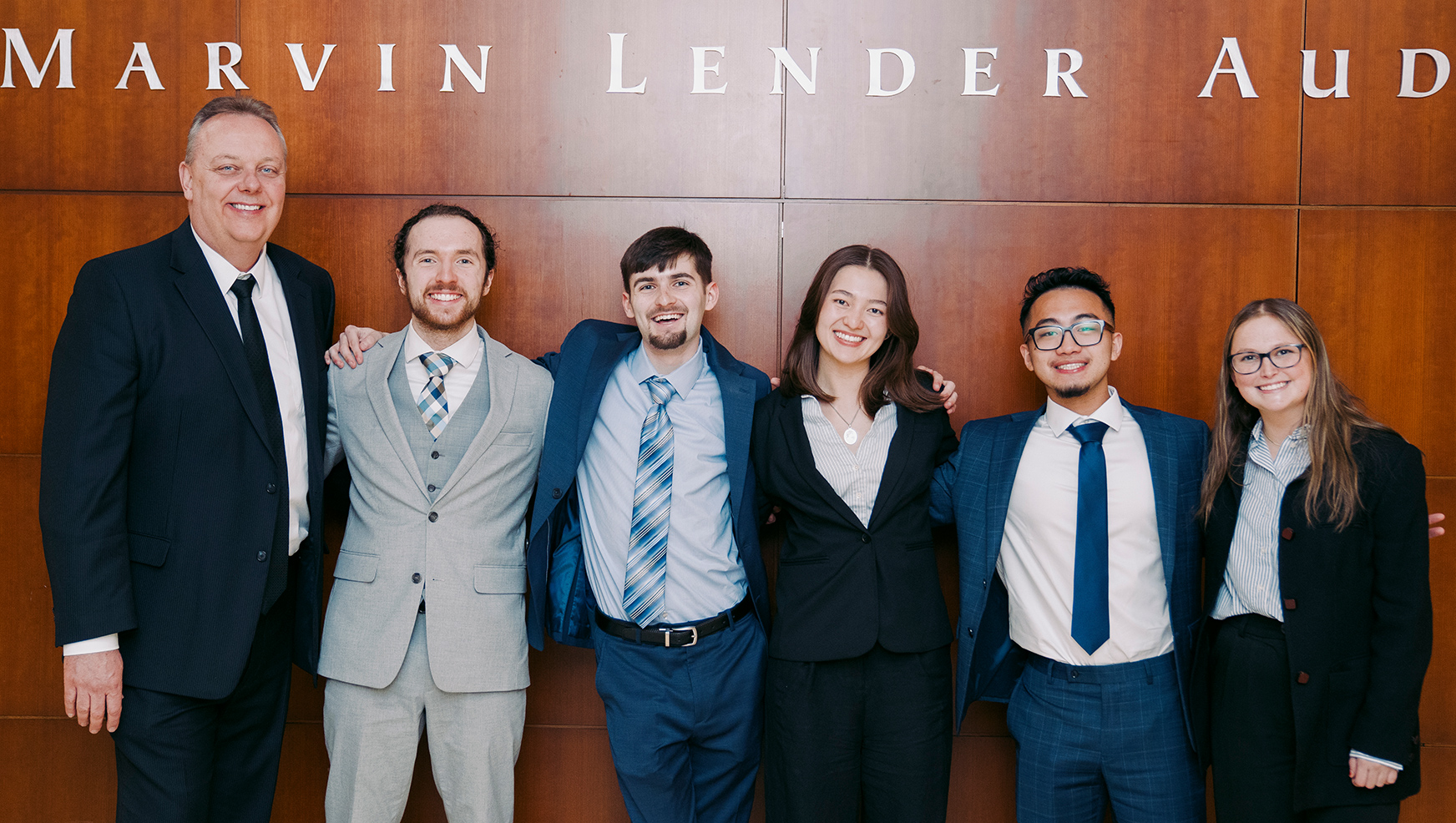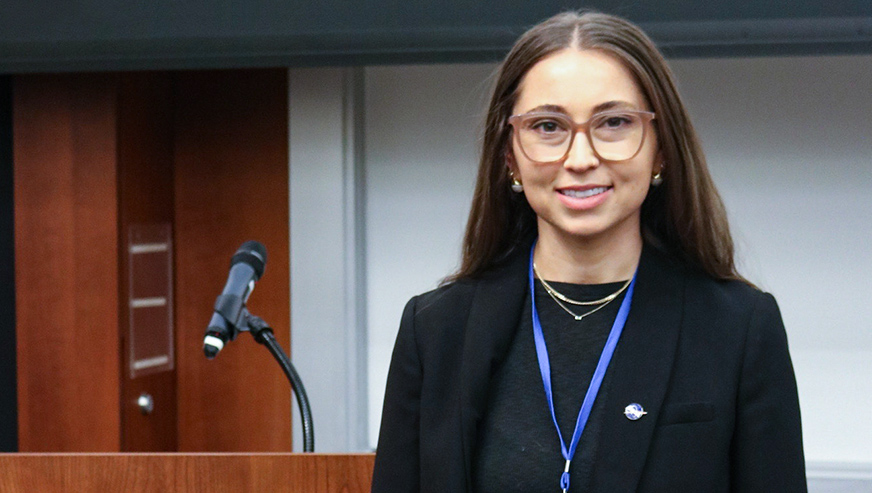Whitman Student Entrepreneurs Leverage NASA-Patented Technology

T2U Coordinator Participates as Judge in 2024 Spring Capstone Finals
During the Whitman School of Management’s 2024 Spring Capstone competition, many teams noted the use of NASA-patented technologies in their business ideas. Whitman adopted NASA's Technology Transfer University (T2U) initiative in the spring of 2023 to bring NASA-developed technology into the classroom and challenge students to consider tech-based business concepts.
Mikaela McShane, communications director at NASA Technology Transfer Expansion (T2X), coordinates the Whitman School’s participation in T2U. McShane visited campus on April 26 for the Capstone competition, observing first-round presentations by teams featuring NASA technology and serving as a judge in the Capstone competition finals. McShane helps facilitate the agency's university activities via T2U, working with more than 60 colleges and universities across 25 states.

Mikaela McShane visiting the Whitman School
Students choose technologies that interest them from NASA’s patent portfolio and incorporate them into their business plans. These technologies are available to be licensed from NASA, with a no-cost option for startups.
Examples of NASA-patented innovations that are now in the mainstream marketplace include memory foam used in mattresses, furniture, shoes, and even football helmets that was originally developed by NASA-funded researchers to keep test pilots cushioned during flights and absorb the pressure of take-off and landing for astronauts. Other examples are cellphone cameras, which were originally invented to have a small but high-resolution camera to take photos from space, and wireless headphones, which were developed to help astronauts move around unencumbered by wires.
T2U is instructor-led, focused on infusing an existing educational curriculum with NASA-developed technology to enrich the academic experience and potentially launch new startups. T2U is adaptable by design, giving instructors the creative freedom to implement it in a way that suits their teaching style and students.
Professor of Entrepreneurial Practice Ken Walsleben made Whitman’s initial contact with McShane and the T2U program. Since doing so, he has continually incorporated the NASA technology with his students and encouraged fellow faculty to do the same. “I find this initiative to be a helpful tool to assist students in the ideation process for their proposed ideas during their Capstone course,” he says.” Since I started working with Mikaela and T2U, about half of my Capstone teams have built their companies around NASA patents.”
In the 2024 Spring Capstone, five of the nine first-round winners mentioned the use of “patented NASA technology” in their presentations, as did many of the 43 teams competing. Team WaveClear, for example, used NASA-patented technology in its idea for a micro-wave decontamination system to kill bacteria in residential well water, and Team EmberArmor used NASA-patented technology to propose a fire-resistant roof cover to protect homes from flying embers during wildfires.
“We see universities as the hub of innovation and places of invaluable collaboration. I was so impressed with the caliber of student ideas and the rigor with which they proposed to implement them in their pitches. You can tell how much effort and intentionality goes into each presentation,” says McShane. “It’s fantastic being on campus, especially since we have developed such a great relationship with the Whitman School, Professor Walsleben and many students through T2U. It’s exciting to see all the ideas students come up with, but it’s really special to see an idea take shape using something patented by NASA.”


